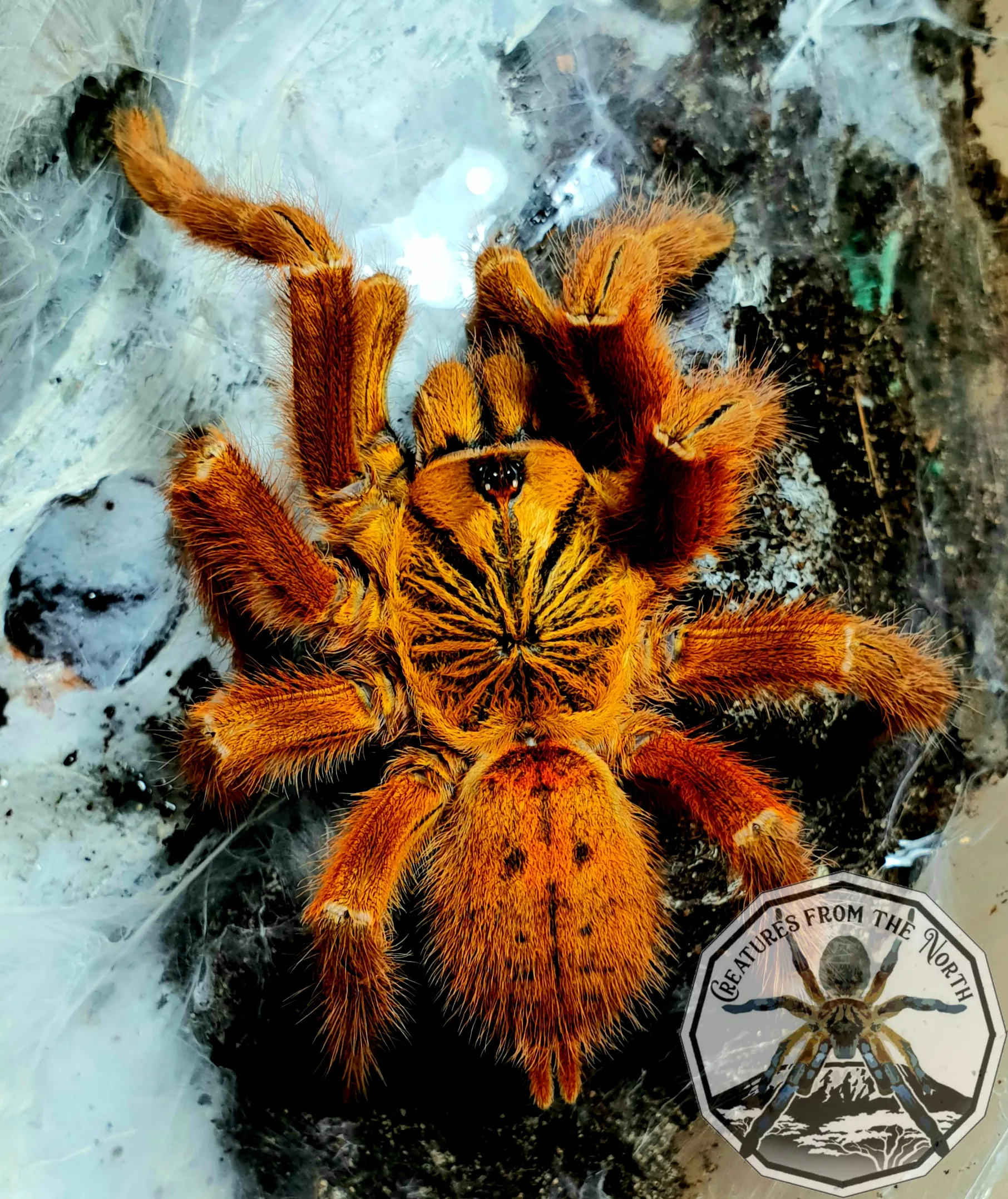What is an OBT Tarantula
The OBT tarantula, scientifically known as Pterinochilus murinus, is a fascinating and often misunderstood arachnid that has captured the attention of both novice and experienced invertebrate enthusiasts. Commonly referred to as the Orange Baboon Tarantula, this spider is native to the arid and semi-arid regions of Africa. Known for its striking orange coloration and relatively aggressive temperament, the OBT presents a unique challenge and reward for those willing to provide proper care. Understanding the OBT tarantula is the first step towards successful and responsible pet ownership. This comprehensive guide will delve into every aspect of OBT care, from habitat and feeding to safety and breeding, ensuring you have the knowledge necessary to provide a thriving environment for your spider. The OBT’s reputation precedes it, and while they are not the ideal pet for beginners, they offer a rewarding experience for those prepared to handle their specific needs.
Origin and Habitat
The Orange Baboon Tarantula calls the African continent home, specifically regions like Angola, Kenya, Tanzania, and Uganda. They thrive in a variety of habitats, from scrublands and savannas to rocky outcrops and even burrows they create themselves. The OBT tarantula has adapted to survive in environments with significant seasonal changes in temperature and rainfall. These spiders are opportunistic burrowers and are often found in hidden places, which provides protection from predators and the harsh African climate. This natural habitat informs the essential requirements for their captive care, influencing the ideal temperature, humidity, and enclosure setup that will support their overall health and well-being. Replicating their natural environment as closely as possible contributes significantly to the spider’s overall health and reduces stress, allowing the tarantula to thrive in a captive environment.
Appearance and Characteristics
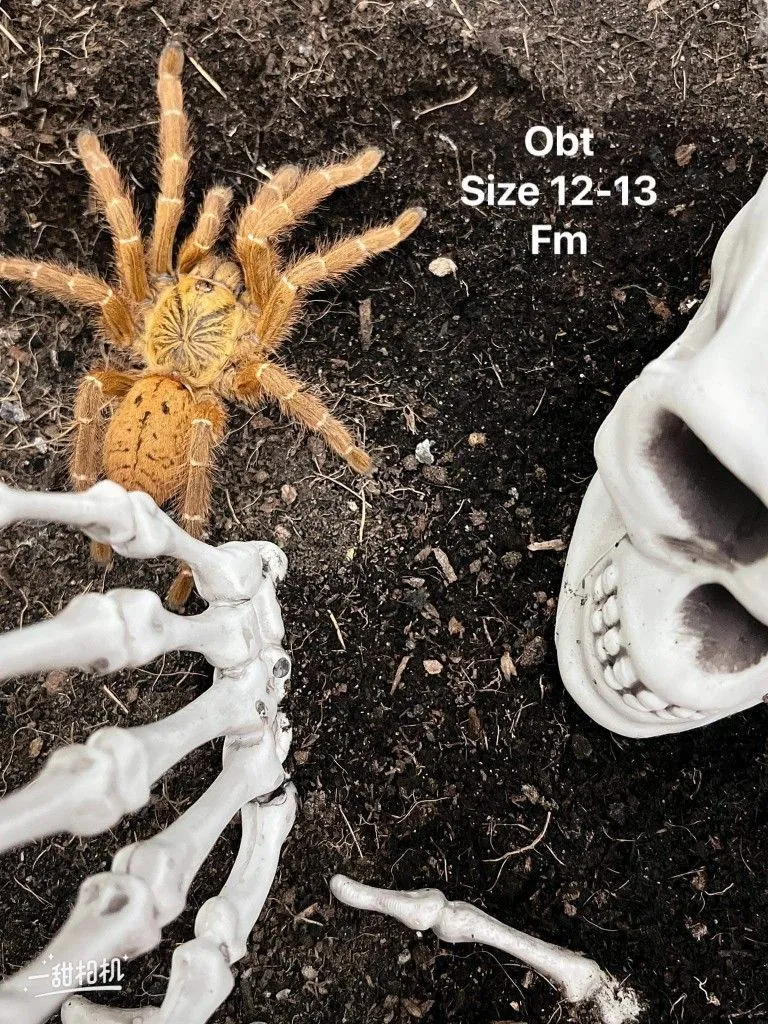
The OBT tarantula boasts a striking appearance. Its body is typically covered in a vibrant orange hue, hence the common name, with some color variations depending on the geographical location from where they originate. The carapace, legs, and abdomen are all usually adorned with shades of orange, though this can vary from a pale, almost yellow-orange, to a deep, fiery color. They are medium-sized tarantulas, with a leg span typically ranging from 4 to 6 inches. Their appearance is characterized by a robust build, a well-defined carapace, and a hairy abdomen. The OBT has the typical characteristics of a tarantula: eight legs, two pedipalps (used for manipulating food and sensing), and eight eyes arranged in a specific pattern that aids in their visual perception, especially when it comes to detecting movement. The OBT tarantula’s overall look is a testament to its adaptability and survival in the diverse ecosystems of Africa.
Temperament and Behavior
One of the most notable aspects of the OBT tarantula is its temperament. They are known for being one of the more defensive and potentially aggressive tarantula species. While not always inclined to bite, they are quick to display defensive behaviors, such as raising their front legs, showing their fangs, and flicking urticating hairs. These hairs can cause intense irritation upon contact with skin or eyes. They are fast movers and can be very unpredictable. This behavior is a reflection of their natural instincts to protect themselves in their native habitat. When they feel threatened, their primary defense mechanism is to strike. It’s extremely important to understand and respect this behavior. Proper handling is crucial for the safety of the keeper and the well-being of the spider. Beginners should avoid this species unless they have the experience to handle their behaviors.
OBT Tarantula Care Guide
Housing Requirements
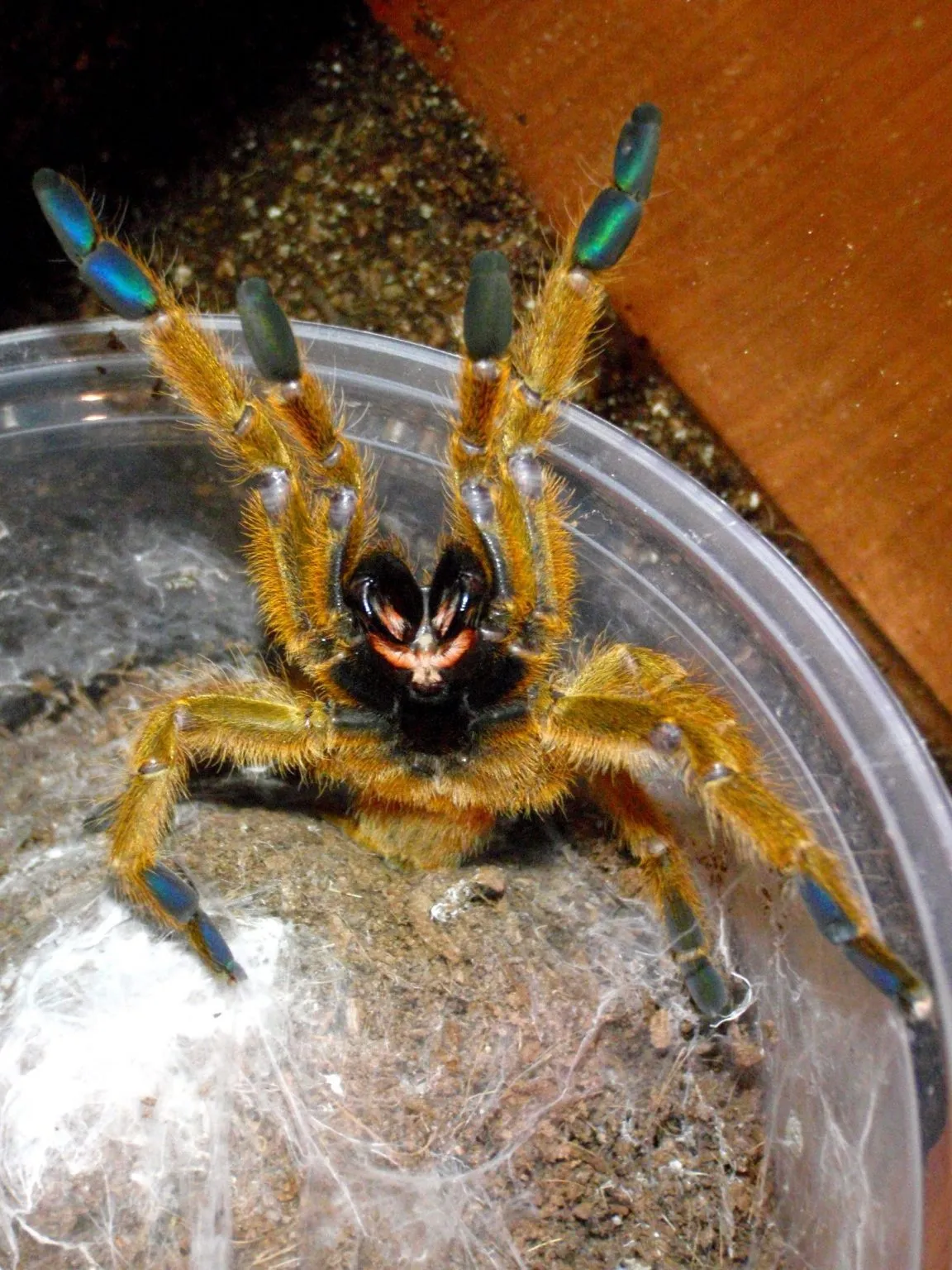
Providing the right housing is essential to ensuring the health and happiness of an OBT tarantula. The proper setup will mimic its natural environment, and reduce stress, allowing the spider to thrive. The enclosure setup should be tailored to meet the spider’s needs. It’s essential to choose the right size tank, substrate, and decor to maintain a comfortable environment. This section provides guidelines and recommendations for creating the ideal habitat. With careful planning and attention to detail, you can create a safe and stimulating enclosure that will allow your OBT to display its natural behaviors. Remember to always prioritize the spider’s comfort and safety, which is key to successfully keeping an OBT tarantula.
Tank Size and Setup
Choosing the right tank size is crucial for your OBT tarantula’s well-being. A general guideline is to provide an enclosure that is at least three times the spider’s leg span in width and length. For an adult OBT, a 10-gallon tank is often suitable, while a larger enclosure may be preferred by some keepers. The enclosure should be escape-proof, with a secure lid. The lid should have adequate ventilation to allow for air circulation but be designed to prevent the spider from escaping. The tank should be designed to ensure the safety of your pet, as well as your safety when interacting with it. The shape of the enclosure also matters; since OBTs are terrestrial, the horizontal space is more important than vertical height. A well-designed setup will allow the spider to move freely and exhibit its natural behaviors without feeling cramped. Ensure that there are no gaps the spider can slip through, as escape is a possibility with this species.
Substrate and Decor
The substrate you choose will play a vital role in the health of your OBT tarantula. A substrate that can hold some humidity is ideal. A mix of coconut fiber, peat moss, and a bit of vermiculite is a good choice. The depth of the substrate should be sufficient for the spider to burrow. A depth of at least 4-6 inches is generally recommended. Include some decor to enrich the environment and allow the tarantula to feel secure. This can include cork bark, artificial plants, and sturdy hides. Make sure all the decor is securely placed to prevent it from falling and potentially injuring the spider. Providing appropriate decor will give the spider a place to retreat. The more places it has to hide, the more secure it will feel, and the less likely it is to be defensive. Regularly monitor the substrate for mold or excessive moisture, which can be detrimental to the spider’s health. Ensure there is always a shallow water dish available for drinking.
Temperature and Humidity
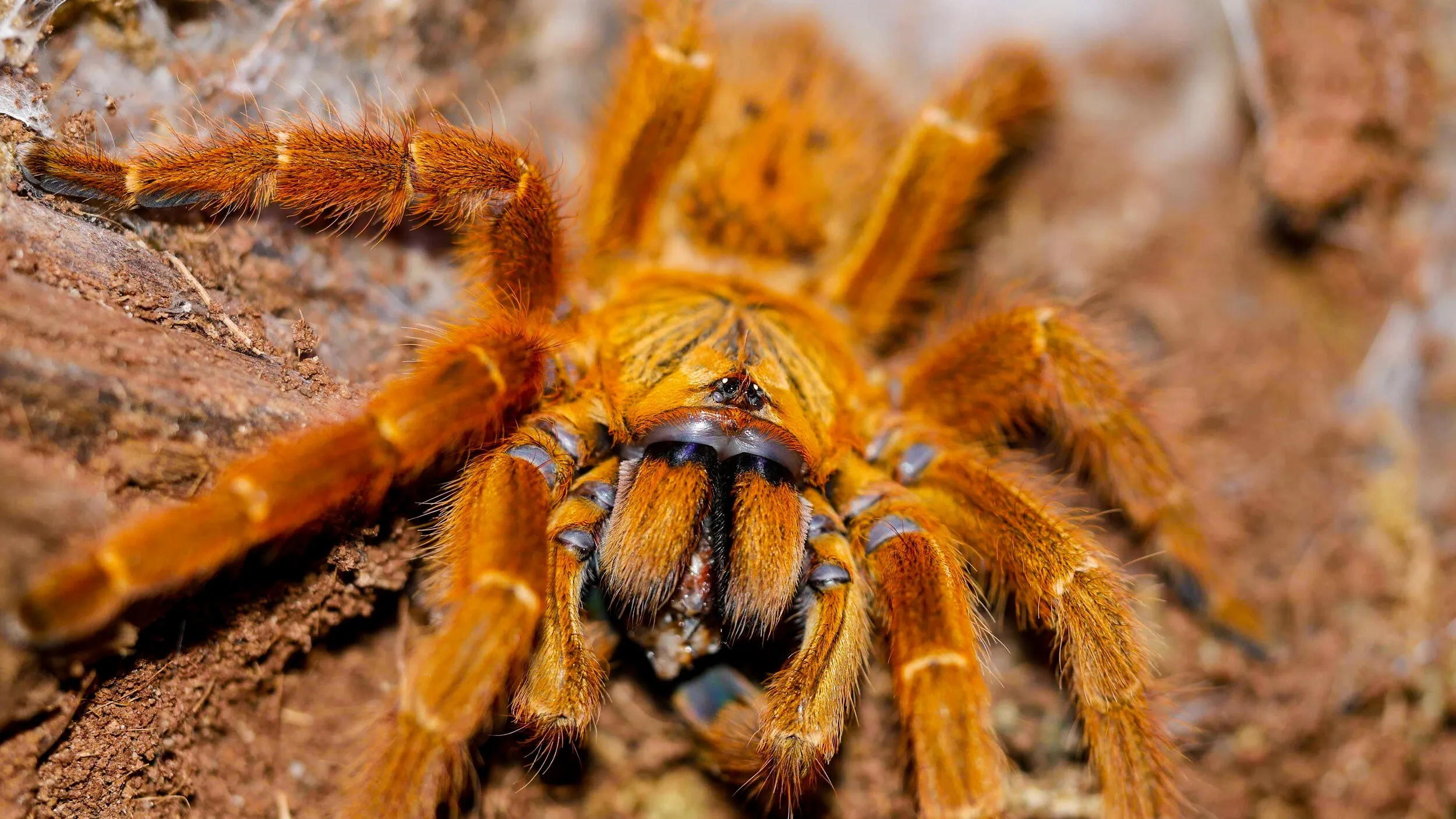
Maintaining the correct temperature and humidity levels is critical for your OBT tarantula’s health. The ideal temperature range is between 75-85°F (24-29°C). You can achieve this by using a heat mat or a heat lamp. Ensure the heat source is placed on the side of the enclosure to create a temperature gradient. Use a thermometer to monitor the temperature in the enclosure. The humidity level should be kept between 60-70%. To maintain this level, lightly mist the substrate every few days, but avoid over-misting, which can lead to mold growth. A hygrometer is useful for monitoring humidity levels. Adequate ventilation is also important, which allows for air circulation and prevents mold growth. Regularly check the enclosure for any signs of condensation or excessive moisture. Adjust your heating and humidity-controlling methods as needed to keep conditions optimal. By providing the right conditions, you are contributing to the long-term well-being of your OBT tarantula.
Feeding and Diet
Proper feeding is essential for the health and growth of your OBT tarantula. Understanding what, how much, and how often to feed your spider is crucial for keeping it thriving. OBTs are voracious eaters, and providing the right diet will ensure your tarantula stays healthy and active. The size of the prey should be appropriate for the spider’s size; it should be no larger than the tarantula’s abdomen. Providing a varied diet will ensure your OBT receives all the necessary nutrients to maintain optimal health. Always make sure the food is readily available and that the spider is capable of catching the prey. Remove any uneaten prey within 24 hours to prevent stress for the tarantula and potential mold growth within the enclosure. Adjust the feeding schedule according to the age and the size of the tarantula.
What to Feed OBT Tarantulas
The diet of an OBT tarantula primarily consists of live insects. Crickets, mealworms, and dubia roaches are all excellent choices. You can also occasionally offer other insects like superworms or grasshoppers. It is important to ‘gut-load’ your feeder insects before feeding them to your tarantula. Gut-loading involves feeding the insects nutritious food like fruits, vegetables, and commercial insect food. This process enriches the insects with vitamins and minerals, which in turn benefit the tarantula. Ensure the feeder insects are free from pesticides or other harmful substances. Always supervise the feeding, especially when using fast-moving feeders like crickets. Remove any uneaten prey within a day to prevent stressing your tarantula and to maintain a clean enclosure.
Feeding Frequency
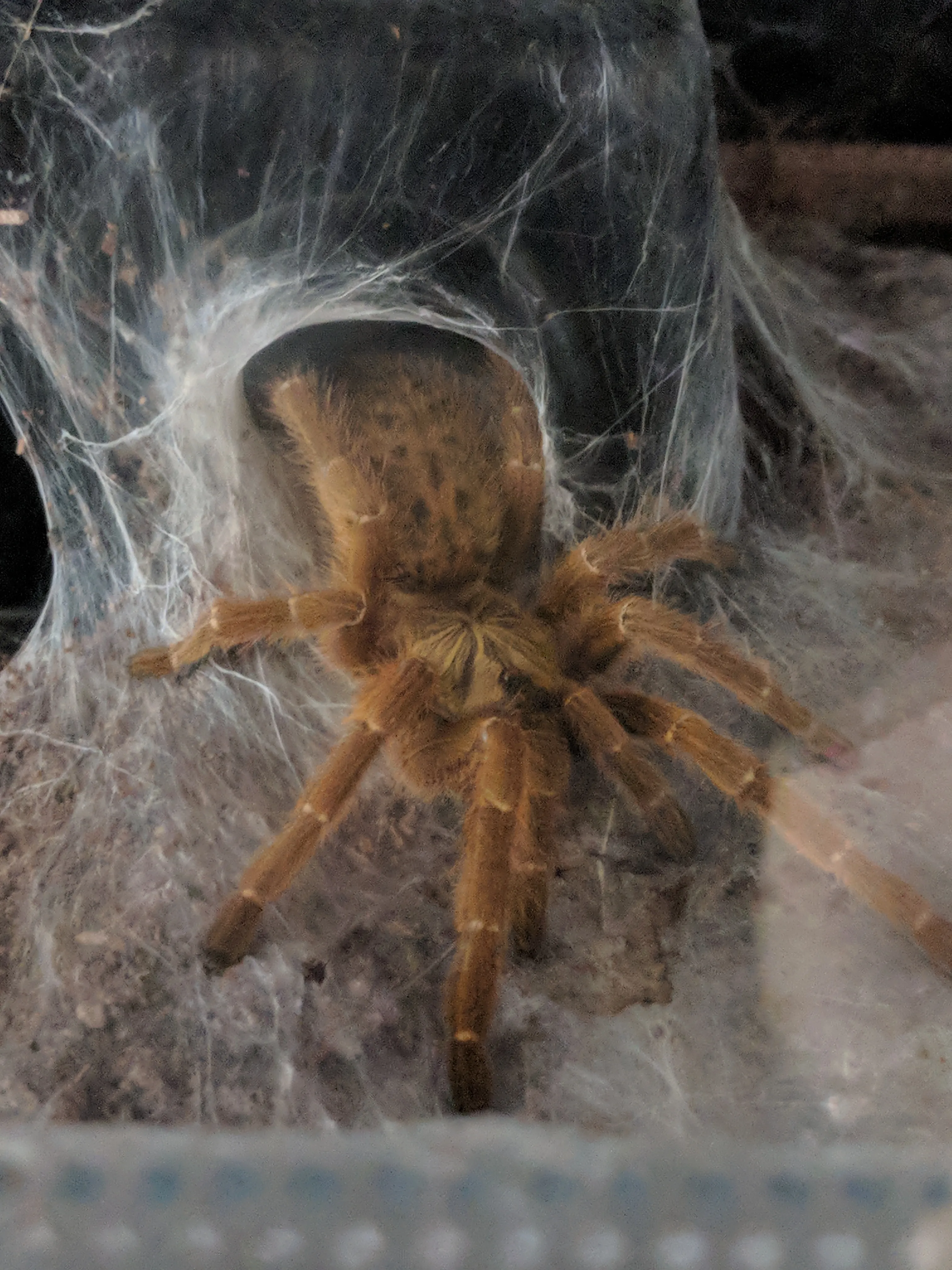
The feeding frequency will depend on the spider’s age and size. Spiderlings should be fed more frequently, typically two to three times per week. Juvenile tarantulas can be fed once or twice a week. Adult OBTs can be fed once every one to two weeks. Observe your tarantula’s abdomen; a plump abdomen indicates it is well-fed. If the abdomen appears thin, increase the feeding frequency. Refrain from feeding your tarantula before molting, as they usually lose their appetite during this process. Keep a record of your feeding schedule and observe your tarantula’s behavior to determine the best feeding plan. Regular observation and a bit of experimentation will help you find the right balance for your specific spider.
Watering and Hydration
Water is essential for the health of your OBT tarantula. Provide a shallow water dish with fresh, clean water at all times. The water dish should be small enough to prevent the tarantula from accidentally drowning, but large enough to be easily accessible. Regularly check the water dish and refill it as needed, especially during warmer months. For spiderlings, using a small bottle cap with water-soaked cotton balls can be safer. You can also lightly mist the substrate in the enclosure every few days to provide an additional source of hydration. Ensure the enclosure has proper ventilation to prevent the buildup of excess moisture, which can lead to mold growth. A well-hydrated tarantula will be more active and exhibit better overall health. Always prioritize clean water and a suitable drinking source for your OBT.
Handling and Safety
Handling OBT tarantulas is generally not recommended, especially for beginners. Due to their defensive nature and speed, they are prone to biting and flicking urticating hairs. Understanding and respecting their temperament is crucial for ensuring your safety and the spider’s well-being. If handling is absolutely necessary, do so with extreme caution and only if you have experience with this species. Prepare yourself for potential defensive behaviors, and always supervise the spider while handling it. Always wash your hands thoroughly before and after handling the tarantula. Safety should be your utmost priority. With careful planning, responsible care, and an understanding of the potential risks, you can enjoy your OBT tarantula while keeping both yourself and the spider safe.
Is OBT Tarantula Venom Dangerous
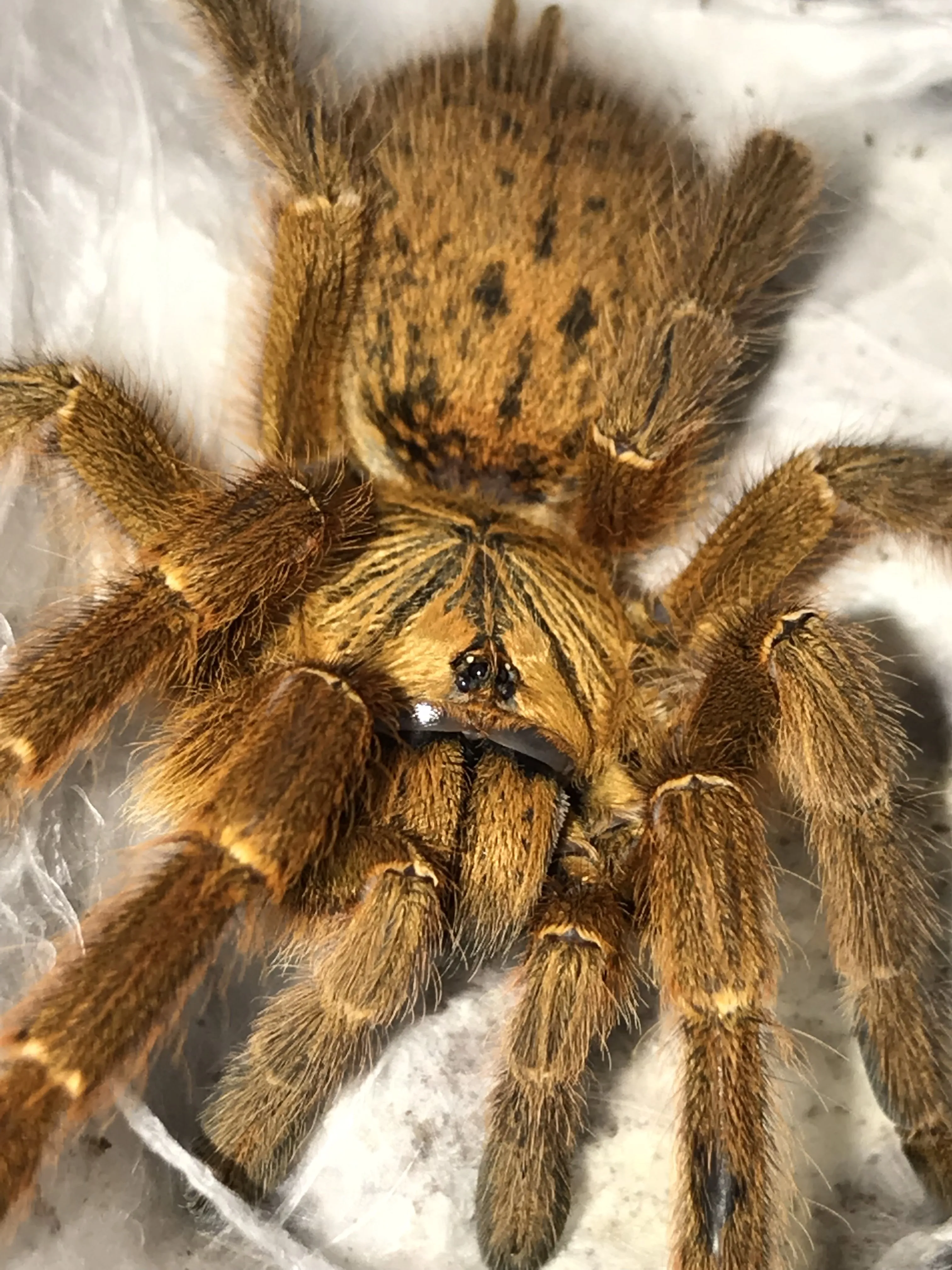
The venom of an OBT tarantula is generally not considered life-threatening to humans. However, a bite can be quite painful and cause localized symptoms such as pain, redness, swelling, and muscle cramps at the bite site. Some individuals may experience more severe reactions, such as nausea, vomiting, or flu-like symptoms. It’s important to note that the severity of a bite can vary depending on the individual’s sensitivity and the amount of venom injected. While not usually dangerous, a bite should be taken seriously. Seek medical attention if you experience severe symptoms or have concerns. Proper handling techniques and a thorough understanding of the spider’s behavior will reduce the risk of bites. The best approach is to prioritize safety and avoid handling the tarantula unless absolutely necessary, and if you do, ensure you’re prepared.
Signs of a Bite and First Aid
If you are bitten by an OBT tarantula, it is essential to remain calm and follow these first-aid steps. Clean the bite area thoroughly with soap and water. Apply a cold compress to reduce swelling and pain. Monitor yourself for any adverse reactions, such as difficulty breathing, dizziness, or severe allergic reactions. If you experience any severe symptoms, seek immediate medical attention. Keep the bite area clean to prevent infection. The symptoms of a bite can vary, but they often include pain, swelling, redness, and muscle cramps. In most cases, the symptoms subside within a few hours or days. If you are unsure about the severity of the bite or if you have any underlying health conditions, consult a doctor. Be vigilant and monitor any symptoms that may arise. Having an understanding of the potential reactions to a bite allows you to stay prepared and address the situation appropriately.
Breeding OBT Tarantulas
Breeding OBT tarantulas is a rewarding, yet challenging endeavor that requires a high degree of experience and knowledge. It is recommended to only attempt breeding if you are an experienced tarantula keeper. The process can be complex and requires a thorough understanding of the spider’s mating behaviors and environmental needs. If you’re interested in breeding OBTs, it’s best to first consult with experienced breeders to learn the nuances of this process. Breeding efforts can be time-consuming. If you are new to this, take your time and gather the necessary resources, and prepare the right conditions to give your tarantulas the best chances of success. Responsible breeding also includes careful planning to ensure proper care for both the adults and the spiderlings.
Mating Process
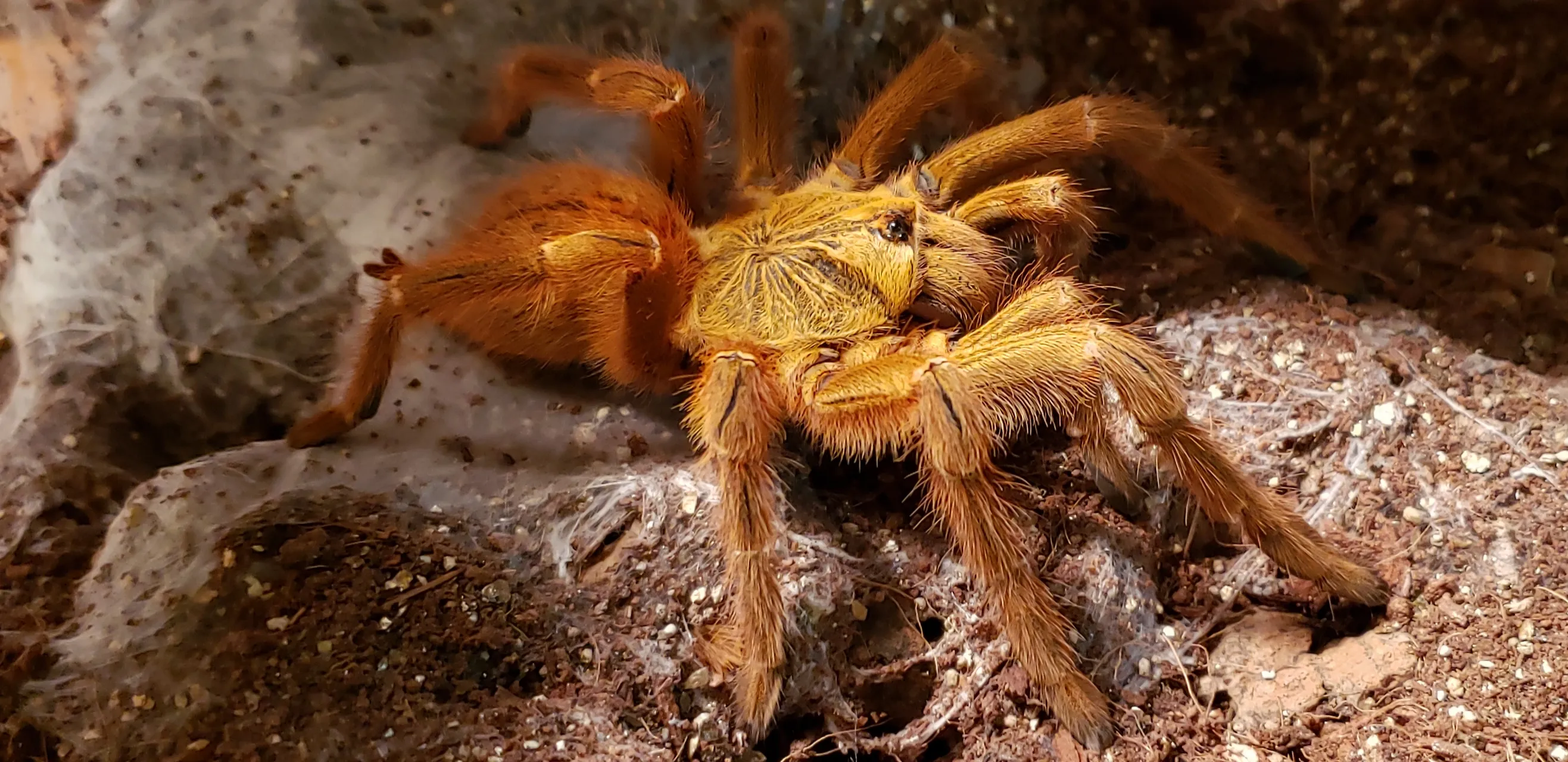
Mating an OBT tarantula involves a specific process. The female OBT needs to be in a suitable condition to be receptive to the male. This usually involves them being well-fed and in a healthy state. Introduce the male tarantula to the female’s enclosure carefully, under close supervision. The male will then approach the female with the goal of mating. The male will often tap on the female’s enclosure to initiate courtship. The female will either accept the male or, if she is not ready, she may attack him. If the female is receptive, the male will insert his palps into the female’s epigastric furrow to deposit sperm. After mating, separate the male from the female immediately to prevent the female from eating the male. After a successful mating, the female may lay eggs in an egg sac within a few months.
Egg Sac and Spiderlings
After mating, the female OBT tarantula will create an egg sac to protect her eggs. The egg sac is a silken structure in which the eggs are incubated. The female will guard the egg sac carefully until the eggs hatch. The incubation period can vary, but it is typically a few weeks to a few months. Once the spiderlings hatch, they are very small and need specialized care. Provide the spiderlings with their own individual enclosures. Spiderlings need to be fed tiny prey items, such as fruit flies or pinhead crickets. Spiderlings are extremely delicate, and any missteps in their care can result in fatalities. You must have a well-thought-out plan. Proper humidity, temperature, and feeding are essential to the survival of the spiderlings. Be prepared for a significant time commitment to ensure the survival of the offspring. The long-term commitment that is needed for raising spiderlings will be a huge factor in determining the success of your breeding program.
Common Health Issues
Like all pets, OBT tarantulas can be susceptible to various health issues. Understanding these potential problems and knowing how to prevent them is crucial for responsible care. Regular observation of your spider is important for early detection of any health problems. By monitoring your tarantula’s behavior, appetite, and overall appearance, you can identify issues before they become too serious. You should be prepared for potential problems, and be ready to address them. The following are some of the common health issues that can affect OBT tarantulas. Prompt action is important to mitigate the effect of any health concerns.
Preventative Measures
Preventing health issues is the best way to ensure the well-being of your OBT tarantula. Maintain a clean and proper enclosure. Always ensure the proper setup by following all the care guidelines provided. Provide the right temperature and humidity levels. This can help prevent respiratory infections and other health issues. Ensure that the water provided is clean and fresh at all times. A nutritious diet and an appropriate feeding schedule are necessary for health. Avoid overfeeding or underfeeding. Regularly inspect the enclosure for any signs of mold, pests, or other problems. Quarantine new tarantulas before introducing them to your existing collection to prevent the spread of diseases. Regular observation, careful monitoring, and preventative actions are your first line of defense.
Signs of Illness
Recognizing the signs of illness in an OBT tarantula is critical for early intervention. Some of the signs include a loss of appetite, lethargy, a lack of coordination, or unusual behavior. Examine the tarantula for any visible injuries, such as cuts or abrasions. Check the abdomen for any swelling or discoloration. Look for any signs of parasites or mites. Respiratory infections can cause labored breathing. If your tarantula is not eating, that could be a sign of a problem. If your tarantula is displaying any unusual behavior or signs of illness, consult with an experienced tarantula keeper or a veterinarian specializing in exotic animals. Early diagnosis and treatment are often essential for successful outcomes. Be vigilant and take swift action if you suspect any health issues.
Conclusion
The Orange Baboon Tarantula can be a challenging but rewarding pet for those who are prepared to provide the appropriate care. Their striking appearance and unique personalities make them a fascinating species. However, it’s essential to approach OBTs with caution and respect due to their defensive behavior. Providing a suitable habitat, a proper diet, and maintaining appropriate temperatures and humidity levels are essential for the spider’s well-being. Safety should always be a priority, especially when handling and interacting with the spider. With a commitment to learning and a dedication to responsible care, you can enjoy the presence of an OBT tarantula. Remember to prioritize the spider’s health and your own safety. By following the guidance and advice, you can create a thriving environment for your tarantula and appreciate the unique qualities of this extraordinary species.
